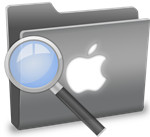History of Macintosh and Macintosh Data Recovery
History of Macintosh
Apple Inc.'s then-chairman Steve Jobs introduced the Macintosh 128k on January 24, 1984. It became the Macintosh product line, and saw success through the end of the decade, though popularity dropped in the 1990s as the personal computer market shifted toward the "Wintel" platform: IBM PC compatible machines running MS-DOS and Microsoft Windows with an Intel processor. In 1998, Apple consolidated its multiple consumer-level desktop models into the all-in-one iMac, which proved to be a sales success and saw the brand revitalized.

Production of the Mac is based on a vertical integration model. Apple facilitates all aspects of its hardware and creates its own operating system that is pre-installed on all Mac computers, unlike most IBM PC compatibles, where multiple sellers create and integrate hardware intended to run another company's operating software. Apple exclusively produces Mac hardware, choosing internal systems, designs, and prices. Apple uses third party components, however, such as graphics subsystems from NVidia, Intel, and AMD. Current Mac CPUs use Intel's X86-64 architecture. The earliest models (1984–1994) used Motorola's 68k, and models from 1994 until 2006 used the AIM alliance's PowerPC. Apple also develops the operating system for the Mac, OS X, currently on version 10.8 "Mountain Lion". The modern Mac, like other personal computers, is capable of running alternative operating systems such as Linux, OpenBSD, and, in the case of Intel-based Macs, Microsoft Windows.
What if Data Loss Happen on Mac
So high tech the Macintosh is, isn’t it? People use it to handle their works, jobs, save data and more. But have you ever thought of what if data loss happens on such a high tech machine? It is unimaginable, right? But unfortunately, it will happen on your Mac due to many reasons. In this article, we will find out the reasons and then offer you want to slove question like "What can I do to recover the files I deleted from my Mac?"
1. Causes of data corruption and loss
2. Common causes of data corruption and loss include:
3. Improper shutdowns, such as caused by power outages or performing a hard restart: pressing and holding the power button or, on Macs so equipped, the restart button.
4. Hardware problems or failures, including hard drive failures, bad sectors, bad RAM, and the like.
5. Failure to eject external hard drives and related storage devices before disconnecting them or powering them off.
6. Bad programming, particularly if it results in either hard restarts or data that is saved incorrectly.
How to Fix Data Loss

To solve the problems about, here we suggest you to use a powerful lost data recovery tool to help you to do so. To be honestly, I will suggest you have a try on uFlysoft lost data recovery software for Mac-Data Recovery for Mac to solve your problem.
With the friendly interface, simply “3-Step” operation and the powerful recovery function, you just need to do some clicks job to finish the recovery process and your lost data will come back to you again.
Kindly Tips for You
1. You should never store anything new to this drive to overwrite the original data until you have restored it.
2. You should never store the recovered data on the same drive to avoid recovery failure.
3. You should always back up the important data in the future.
Get more useful information about data recovery whenever you want by visiting our site.
